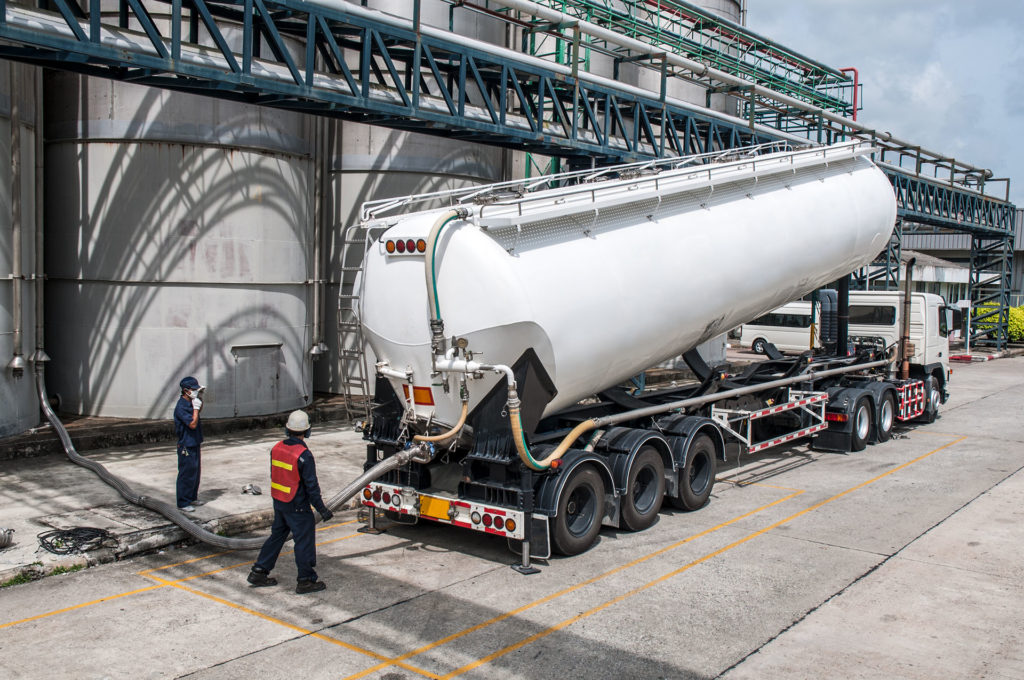March 2018: Month 58 in Alberta
 Working as a Semi-Vac and Tanker Truck Operator in Alberta
Working as a Semi-Vac and Tanker Truck Operator in Alberta
After an abysmal February, March has brought some light and hope for 2018. The new oilfield services company I am contracting myself to isn’t the busiest. But the people are generally decent. I’m on only semi trucks (semi vac and tanker). The money I’ve earned so far is respectable. I’m home in my own bed most of the time despite the long workdays of 16 hours, 18 hours, and beyond. I’ve also been able to escape my last terrible employer – where I’d be stuck in camp for weeks, but not be paid for each day there, as the client did not require the trucks I operated everyday. The trucks have also been barely operational (and not legal for the road anymore for that matter), and anything that went wrong is then blamed on the operator, me. The supervisor even tried to get broken chains’ cost to be taken from my wages – though breaking chains have been due to differentials failing to lock, where then the excessive tire spinning under poor road conditions destroyed chain links. They’ve also been unwilling to pay me as a contractor, resulting in $2,000 approx. less in my pocket per month due to the loss of particular tax breaks. Now I’m certainly glad that is over. My cashflow has been significantly positive for the month of March so far at the time of writing this. The weather is gradually clearing up away from the constant freezing and thawing around the 0C mark.

It has been nice to get away from the dirty combo vac and straight vac work. I do not miss the back-aching lugging of frozen, mud-drenched hoses. No longer I am smashing frozen hoses together and getting covered in mud and other odd dark fluids as I either take them apart, or they break apart under high pressure. No longer I am climbing in tanks and shale bins to remove the fluid down to the bottoms and their residue. Most of the time, I am just hooking up a hose to a fluid source, turning on my pump as the source pump is turned on by another operator, and the fluid flows to my truck. The tanker hoses are also two-inch instead of four; they are much easier on the body. Semi-vac work is not as clear-cut and involves the large traditional 4-inch heavy hoses, but usually I am just hooking up two ends of hoses, and onward I go to load the fluid from a high-volume source, instead of crawling around in odd spaces trying to wrestle a huge hose to collect small pockets of fluid. Then I accumulate many billable hours of work travelling back and forth between the source and disposal sites. Sometimes I sit at a client’s site for hours doing nothing while I wait for it to be ready to either collect my fluid or load my truck with some, which can become very boring – though it still beats what I was doing before.

Semi-vac work sometimes still involves mud instead of less viscous oilfield fluids, but most of the time we are hardly covered in it. Be careful and we can stay very clean. Clean is the key word here – this tanker and semi vac work is clean, and I like to stay clean. To my initial surprise, the semi-vac units at this company are not like the other Western Star vacuum units and the like I’ve been used to, where the hydraulics of the truck run the blower (the component that turns at high-speed within the plumbing of the vacuum system to either create within the debris tank a powerful vacuum, or high-pressure). The blower is run on an entirely separate system on the trailer on its own, with its own motor. The tank, associated components, and trailer are all one entirely separate, self-sufficent unit – though if the trailer runs out of air and there is no tractor to supply it some, the air valves in the rear will not function (unless the valves are hand-opened values, of course). Interesting to say the least.

Most of my work so far this month has been around Conklin, Drayton Valley, and Devon. The highway travel has added good hours to my bills and made the long days fly by fast. There has been one day where the fog was so terrible that I only had a few metres of visibility, though. On a highway where normally drivers have been travelling at 100 – 110km/h, we’ve been lucky to drive at 40km/h in the void. Yes, the exterior in photo on the right is not due to poor camera quality; it’s how bad it actually had been that night.
Though now it feels like the worst is over, I worry more about my school. With only two months to go until the start of the construction season (where then I’d have no time left for education), I’m running out of time quickly to finish my electrician 3rd period schooling. AIT also is unwilling to provide me another extension to acquire trade hours, so regardless of whether I finish school or not, I’d no longer be an apprentice in the trade as of June. Financially, I am unequipped currently to go to school full time, or take the drastic pay cut to work as an electrician apprentice. Working in the oilsands also has reminded me of Power Engineering – a role in which relates to my experience closer to that of the electrical trade, and also much higher paying by the hour. I often question whether I should had just abandoned the electrical trade years ago and competed my Power Engineering ticket. By now, I’d be making $50+/hour in less physically and mentally draining work. With a set schedule, I’d have even been able to use the paperwork to get a mortgage easier to grow my real estate portfolio. I don’t like putting faith above logic, but sometimes I suppose you just got to hope for the best, and think everything will just somehow work out.


